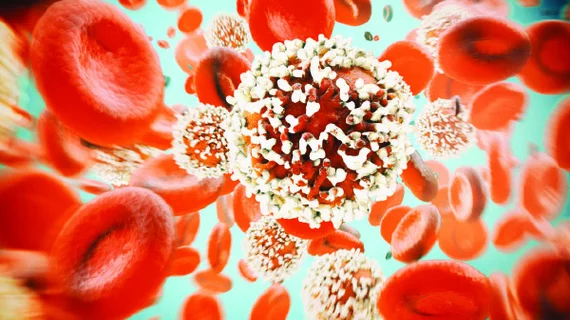Advanced imaging, genomic analysis may change the way we treat cancer patients
Combining imaging with a novel genomic analysis technique could help physicians devise more nuanced cancer diagnoses and treatments, especially for patients with brain tumors, according to a study published in PLOS One.
Researchers found that, with the help of MRI, they could produce data required to key in on the cells in and around a tumor sample. These cellular regions are “vastly” understudied, but play a crucial role in understanding the development of cancer, lead author Michael Berens, PhD, director of the Translational Genomics Research Institute in Phoenix, Arizona, said.
"This study is a bridge between genetic sequencing, single-cell analysis and high-resolution medical imaging," Berens added in a Jan. 31 statement. "By literally focusing on how tumors look on the outside, as well as spelling out their DNA cell characteristics on the inside, we believe we can provide physicians, oncologists, radiologists, surgeons and others with timely information about how to best attack each patient's cancer."
In order to characterize tumors at the molecular level, scientists typically must grind up cells taken from a biopsy to extract DNA, RNA and other genomic materials; this helps identify which genes may be causing the cancer. The method, and even the most up-to-date approaches, however, don’t offer the granular insights into how normal cells interact with cancerous ones.
If this information was available, Berens believes many questions could be answered, such as: How is the tumor interfering with the immune system? How is it infiltrating nearby tissue? And how is it gaining the nutrients to keep growing?
With this in mind, the research institute gathered cellular data from protein, genomic and MRI analysis taken from tumor cases. After integrating all their data, the institute partnered with the General Electric Global Research Center to input it into a novel imaging tool called Cell DIVE. This multiplexed, immunofluorescence imaging tool stains tumor samples with antibodies attached to fluorescent dyes.
The group used the tool to analyze more than 100,000 cells taken from brain tumor cases to accurately understand the genetic mutation differences between two types of cancer growths.
“Using this platform, we can visualize and analyze various cell types and cell states present in the tumor tissue as well as how they interact with each other and their microenvironment," Anup Sood, PhD, senior scientist at GE Global Research and a lead author of the study said.
The findings could be a particular boon for those with brain tumors, the group wrote, whose cancers typically grow rapidly and are difficult to diagnose, treat, remove and monitor. This is compounded by the fact that each patient’s brain tumor cells are unique, even down to the cells within a tumor.
Additionally, Sood and colleagues wrote, surgeons could consult this cell-level information to decide how much tissue must be extracted to remove a cancer, or even which drugs might be best for each patient during their road to recovery.
“The more cell-level data we analyze, the more we learn about tumor biology, cell-to-cell interactions, immune response and how tumors progress,” added Fiona Ginty, PhD, a senior scientist with GE. “Further, with the integration of cellular, medical imaging and genomic data, we gain a more holistic understanding of why certain tumor types progress more rapidly, and others are more slow-growing, and ultimately which drugs a patient may respond to."

